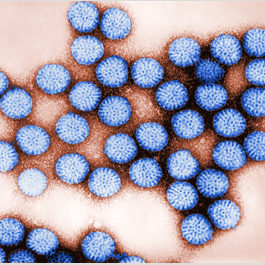Rotavirus is a leading cause of acute gastroenteritis (AGE) in children and is highly transmissible. In this study, we assessed the presence of AGE in household contacts (HHCs) of pediatric patients with laboratory-confirmed rotavirus.
Between December 2011 and June 2016, children aged 14 days to 11 years with AGE were enrolled at 1 of 7 hospitals or emergency departments as part of the New Vaccine Surveillance Network. Parental interviews, medical and vaccination records, and stool specimens were collected at enrollment. Stool was tested for rotavirus by an enzyme immunoassay and confirmed by real-time or conventional reverse transcription-polymerase chain reaction assay or repeated enzyme immunoassay. Follow-up telephone interviews were conducted to assess AGE in HHCs the week after the enrolled child’s illness. A mixed-effects multivariate model was used to calculate odds ratios.
Overall, 829 rotavirus-positive subjects and 8858 rotavirus-negative subjects were enrolled. Households of rotavirus-positive subjects were more likely to report AGE illness in ≥1 HHC than were rotavirus-negative households (35% vs 20%, respectively; P < .0001). A total of 466 (16%) HHCs of rotavirus-positive subjects reported AGE illness. Of the 466 ill HHCs, 107 (23%) sought healthcare; 6 (6%) of these encounters resulted in hospitalization. HHCs who were <5 years old (odds ratio, 2.2 [P = .004]) were more likely to report AGE illness than those in other age groups. In addition, 144 households reported out-of-pocket expenses (median, $20; range, $2–$640) necessary to care for an ill HHC.
Rotavirus-associated AGE in children can lead to significant disease burden in HHCs, especially in children aged <5 years. Prevention of pediatric rotavirus illness, notably through vaccination, can prevent additional illnesses in HHCs.
Evidence for household transmission of rotavirus in the United States, 2011-2016
7.feb.19
Journal of the Pediatric Infectious Diseases Society, https://doi.org/10.1093/jpids/piz004
Mary E Wikswo, Umesh D Parashar, Benjamin Lopman, et al

